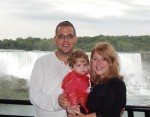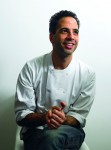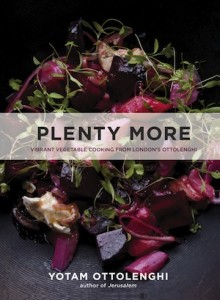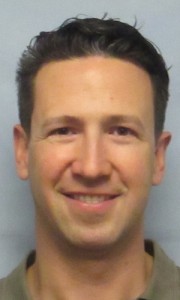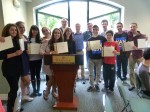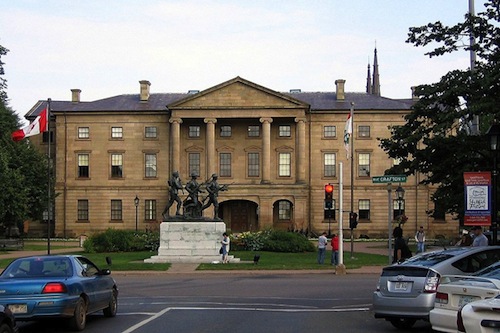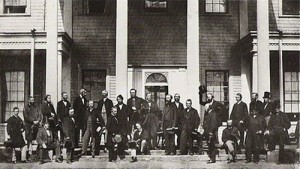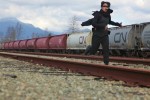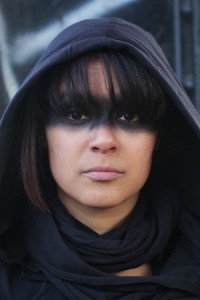Rabbi Josh and Laura Stein with their daughter Yehudis at Niagara Falls. (photo from Josh Stein)
Josh and Laura Stein come from similar backgrounds – both grew up as unaffiliated Jews just a few kilometres from each other in Toronto, both became more interested in their Jewish heritage as teens through National Conference of Synagogue Youth (NCSY), and both ended up learning in Israel, where they met. Now, the married couple (along with their 10-month-old daughter Yehudis) has moved to Vancouver as Rabbi Josh Stein takes on a new role as the NCSY chapter coordinator in Vancouver, hoping to give back what they both gained from NCSY.
“I attended Jewish elementary day school and a public high school. I had no affiliation really,” he told the Independent. After becoming involved with an NCSY rabbi, he said, he learned about a Jewish heritage that he never had experienced before. After high school, Stein chose to spend two-and-a-half years in a yeshiva in Israel, where he became Orthodox.
“Going to Israel for the first time really opened my eyes to a different aspect of Judaism that I never experienced before,” said Stein. “That, coupled with a week in Poland [through a trip organized by his yeshiva], really opened my eyes to my Jewish heritage and kind of endowed with me the exploring of Judaism further from there.”
At the same time, his wife to be was going through a similar journey: she also had left her native Toronto to study in Israel, eventually meeting her husband through the same rabbi who they both met in high school and had sparked their Jewish quests.
After graduating with smicha, a bachelor of arts in Judaic studies, a bachelor of talmudic law and a teaching certification from the Israeli Ministry of Education, Josh Stein and his family moved back to Toronto. Recently, they found their next role, joining the Vancouver Jewish community.
“There are so many people who have helped us along the way in becoming Orthodox that we really felt that it was part of our duty to give back to the community and allow other students to be as fortunate as we have been in discovering our Jewish heritage,” said Stein.
As part of his new role, he’ll be organizing educational and social events for Jewish students in Vancouver, from Shabbatons to paintball sessions and weekly learning classes.
“Essentially, my job is to work alongside Rabbi [Samuel] Ross and bring in new energy to the younger kids coming in,” said Stein. They’ve already held the first Vancouver Shabbaton of the year, which brought together about 100 kids from Western Canada, as well as Seattle and Portland, to spend a Shabbat together in Vancouver.
“The kids had a blast, there was so much camaraderie and this feeling of being part of a greater community,” he said. They have also started weekly Torah High learning classes and have many programs lined up for the year.
NCSY, which has been in Vancouver for about 50 years (and is now in its 60th year nationally), aims to help Jewish teens discover and connect with their Jewish roots through fun, informative and educational programming and mentorship. Although Vancouver is known for its high intermarriage and assimilation rates, the number of Jewish youth involved in NCSY has grown in the past few years, which is one of the reasons why the chapter brought in the Steins.
“We brought them in due to sheer growth,” said Ross, NCSY Vancouver city director. “We are now seeing well over 200 kids a year. Perhaps five [or even two] years ago, kids were coming in here and there; now, the kids are coming in for two, three, four or five times every week for programs.
“In order to be able to continue our growth, we felt this was the right time to bring in the next couple who would complement what Gila, my wife, and I are presently able to offer.”
The Steins are looking forward to being part of the growth of Vancouver NCSY.
“NCSY to me is a family that unites our community as a whole. It’s an organization that really brings Jews together from all different aspects of life and makes them feel like they’re part of a family, no matter their religious level,” said Stein. “We hope to allow each student to find their own uniqueness about Judaism and internalize it for themselves.”
Vicky Tobianah is a freelance writer and editor based in Toronto. Connect with her on Twitter, @vicktob, or at [email protected].

